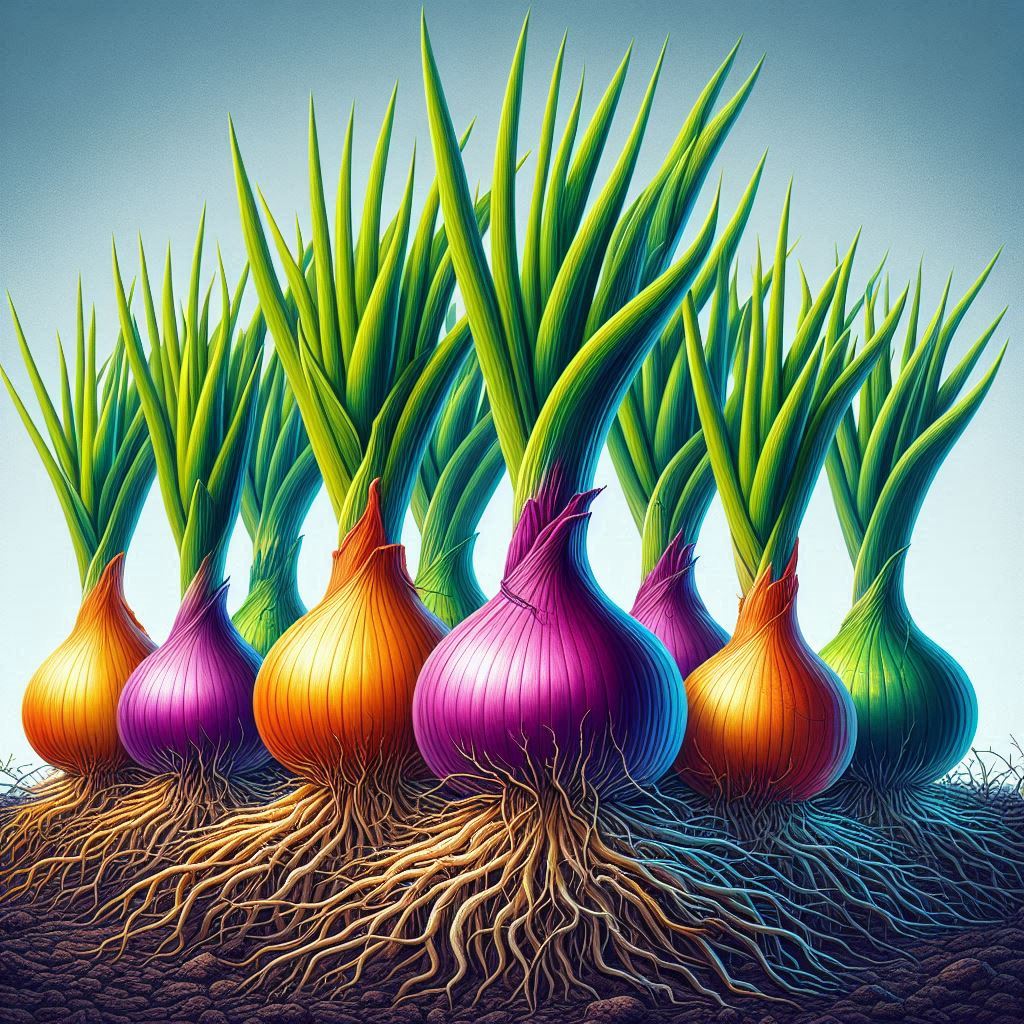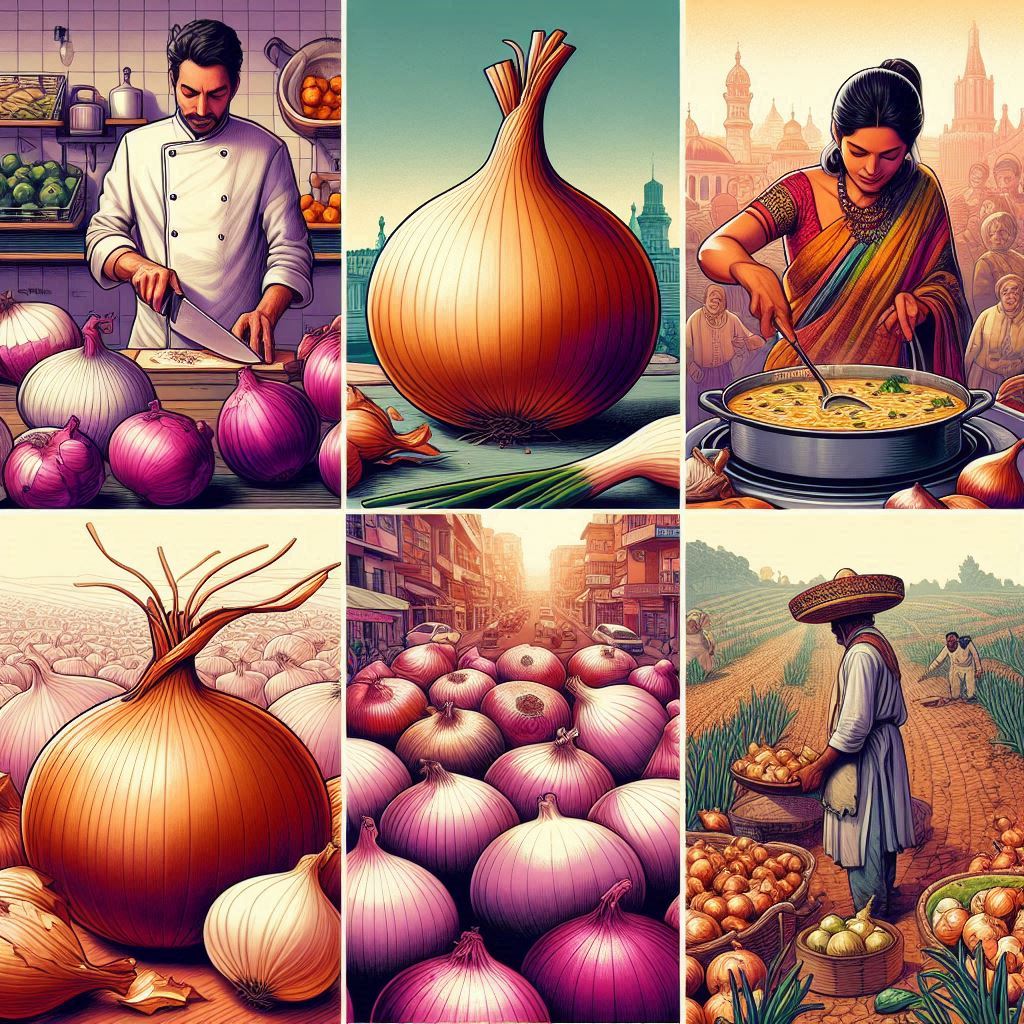Symbolism
What do fences symbolize in literature and film?

[ad_1]
What do fences symbolize in literature and film?
This article explores the symbolism of fences in literature and film. Fences are commonly used as a literary device to represent boundaries, obstacles, or limitations. Whether physical or metaphorical, fences can have various symbolic meanings depending on the context in which they are used. From symbolizing protection and safety to representing division and confinement, fences play a significant role in conveying deeper themes and emotions in art and storytelling.
How do fences symbolize protection and safety in literature and film?
In many literary works and films, fences are often used to symbolize protection and safety. These barriers can represent a sense of security and boundaries that shield characters from harm or danger. For example, in the play “Fences” by August Wilson, the fence built by the protagonist, Troy Maxson, serves as a physical barrier that protects his family from external threats and intruders.
Similarly, in the film “The Shawshank Redemption,” the high walls and barbed wires of the prison fence symbolize the confinement and safety of the inmates within its walls. Fences can also signify the boundaries that define a character’s personal space and privacy, giving them a sense of security and comfort in their surroundings.
How do fences symbolize division and separation in literature and film?
On the other hand, fences can also symbolize division and separation in literature and film. These barriers can represent the social, cultural, or emotional boundaries that separate characters from one another. For example, in the novel “To Kill a Mockingbird” by Harper Lee, the fence between the Finch family and their reclusive neighbor, Boo Radley, symbolizes the divide between them and the misunderstood outcast.
In the film “Fences” starring Denzel Washington, the fence built by Troy Maxson becomes a physical manifestation of the emotional barriers between him and his son, symbolizing the strained relationship and unresolved conflicts between them. Fences can also represent the barriers that prevent characters from connecting with each other on a deeper level, highlighting themes of loneliness, isolation, and alienation.
How do fences symbolize confinement and limitation in literature and film?
Fences can also symbolize confinement and limitation in literature and film, representing the restrictions and obstacles that characters face in their lives. These barriers can trap characters within boundaries and prevent them from experiencing freedom and growth. For example, in the novel “The Glass Menagerie” by Tennessee Williams, the glass unicorn on Laura’s shelf symbolizes her own fragility and confinement within the walls of her home.
Similarly, in the film “The Truman Show,” the dome-shaped fence around Seahaven symbolizes the artificial boundaries and limitations imposed on the protagonist, Truman Burbank, keeping him isolated from the outside world. Fences can also signify the internal struggles and emotional barriers that characters have to overcome, symbolizing the challenges and limitations that hinder their personal development and happiness.
How do fences symbolize freedom and liberation in literature and film?
Despite the negative connotations associated with fences, they can also symbolize freedom and liberation in literature and film. These barriers can serve as a metaphor for breaking free from constraints and embracing new opportunities. For example, in the novel “The Secret Garden” by Frances Hodgson Burnett, the locked garden surrounded by a high fence symbolizes the hidden potential and growth awaiting the protagonist, Mary Lennox.
In the film “The Great Escape,” the barbed wire fences of the prisoner of war camp symbolize the physical and emotional boundaries that the characters must overcome to regain their freedom. Fences can also represent the journey towards self-discovery and empowerment, symbolizing the liberation and transformation of characters as they break through the barriers that hold them back.
Conclusion
In conclusion, fences play a multifaceted role in literature and film, symbolizing a range of themes and emotions such as protection, division, confinement, and freedom. Whether used to represent physical boundaries or metaphorical obstacles, fences add depth and complexity to storytelling, conveying powerful messages about the human experience and the complexities of relationships. By understanding the symbolism of fences in art and literature, audiences can gain a deeper appreciation for the ways in which barriers shape the narrative and character development in their favorite works.
FAQs
1. Can fences symbolize different things in the same story or film?
Yes, fences can symbolize multiple concepts simultaneously in a story or film. For example, a fence may represent both protection and separation between characters, adding layers of meaning to the narrative.
2. Why are fences such a common symbol in literature and film?
Fences are a common symbol in literature and film because they evoke universal themes of boundaries, barriers, and division that resonate with audiences. Their versatility allows writers and filmmakers to explore complex emotions and relationships through a simple yet powerful visual motif.
3. Can fences symbolize both positive and negative concepts?
Yes, fences can symbolize both positive and negative concepts depending on the context in which they are used. They can represent protection and safety as well as division and limitation, highlighting the duality of their symbolic meaning in art and storytelling.
4. How do filmmakers use fences to enhance the visual storytelling in a film?
Filmmakers use fences as a visual motif to enhance the storytelling by framing shots, creating a sense of confinement or separation, and symbolizing characters’ emotional states. The presence of fences can add depth and symbolism to the visual composition of a film, helping to communicate themes and messages effectively.
5. What are some examples of famous films or novels where fences play a significant symbolic role?
Some examples of famous films or novels where fences play a significant symbolic role include “Fences” by August Wilson, “The Shawshank Redemption,” “To Kill a Mockingbird” by Harper Lee, and “The Truman Show.” These works explore the diverse symbolic meanings of fences in various contexts, highlighting their importance as a literary and cinematic device.
[ad_2]
Symbolism
What Does Ear Pain Symbolize Spiritually?

In this article, we will explore the spiritual significance of ear pain. We will discuss the possible spiritual meanings and symbolism associated with ear pain, as well as potential ways to address and understand it from a spiritual perspective. We will also delve into the potential connection between ear pain and spiritual awakening or growth.

What are the potential spiritual meanings of ear pain?
Ear pain can be a way for our bodies to communicate with us on a spiritual level. From a spiritual standpoint, ear pain can symbolize a need to listen more closely to our inner selves and the messages of the universe. It may be a sign that we are not paying enough attention to our intuition, or that we are ignoring important spiritual guidance.
Ear pain can also be a symbol of blocked communication, whether that be with our own spiritual guides or with the people around us. It may be an indication that we need to work on opening up our lines of communication, both spiritually and in our day-to-day lives.
How can we address ear pain spiritually?
One way to address ear pain from a spiritual perspective is to engage in practices that can help to open up our spiritual channels and promote better communication. This may include meditation, prayer, or energy work such as Reiki. These practices can help to clear any blockages that may be contributing to our ear pain and help us to better receive spiritual guidance.
It is also important to pay attention to any messages that may be coming through the ear pain itself. It may be a sign that there are spiritual lessons or insights that we need to be more attuned to. By remaining open and receptive to what our bodies and spirits are trying to tell us, we can gain a deeper understanding of the spiritual significance of our ear pain.
Is there a connection between ear pain and spiritual awakening or growth?
Ear pain can indeed be connected to spiritual awakening or growth. As we progress on our spiritual journey, our senses and awareness may become heightened, which can manifest physically as sensitivity or discomfort in our ears. This can be a sign that we are becoming more attuned to spiritual energies and messages.

Additionally, ear pain can symbolize the shedding of old ways of thinking and perceiving the world. Sometimes, as we grow spiritually, we may experience physical discomfort as we release old patterns and beliefs that no longer serve us. Ear pain can be a sign that we are undergoing a spiritual transformation and that we are shedding old layers of ourselves in order to align with our higher selves.
How can we approach ear pain with a spiritual mindset?
When experiencing ear pain, it is important to approach it with a mindset of openness and curiosity. Rather than simply seeking out physical remedies, consider exploring the potential spiritual meanings and messages behind the pain. This may involve introspection, meditation, or seeking guidance from spiritual practitioners or mentors.
It is also important to be gentle and patient with ourselves as we navigate the spiritual significance of ear pain. It may take time and reflection to fully understand and address the spiritual messages that may be associated with our discomfort. By approaching the situation with an open heart and mind, we can gain valuable insights and potentially even undergo spiritual growth or transformation.
Conclusion
Ear pain can hold various spiritual meanings and messages, serving as a potential indicator of the need for heightened spiritual awareness, better communication, or even spiritual growth and awakening. By approaching ear pain with a mindset of openness and curiosity, we can explore its spiritual significance and potentially gain valuable insights and guidance in our spiritual journeys.
Read more about eczema
FAQs
What are some common physical causes of ear pain?
While we have discussed the spiritual significance of ear pain in this article, it’s important to note that there are also many physical causes of ear pain. Common physical causes include ear infections, wax buildup, and foreign objects in the ear. If you are experiencing ear pain, it is important to seek medical attention to rule out any physical causes before exploring the spiritual significance.
Can ear pain be a sign of a spiritual awakening?
Ear pain can be a potential indicator of spiritual awakening, especially if it is accompanied by heightened sensitivity and awareness. Many people report experiencing physical discomfort, including ear pain, as they undergo spiritual growth and transformation. It’s important to pay attention to the messages that may be associated with the pain and seek guidance from spiritual practitioners if needed.
How can I differentiate between physical and spiritual causes of ear pain?
Differentiating between physical and spiritual causes of ear pain can be challenging. It’s important to seek medical attention to rule out any physical causes, such as infections or injuries. Once physical causes have been addressed, you can explore the potential spiritual meanings and messages behind the pain through introspection, meditation, and seeking guidance from spiritual mentors or practitioners.
Are there spiritual practices that can help alleviate ear pain?
While spiritual practices such as meditation, Reiki, and prayer can help to open up spiritual channels and promote better communication, it’s important to note that these practices should complement, not replace, medical treatment for ear pain. If you are experiencing physical discomfort, it is essential to seek medical attention to address any physical causes of the pain.
How can I remain open to the spiritual messages behind ear pain?
Remaining open to the spiritual messages behind ear pain involves cultivating a mindset of curiosity, introspection, and receptivity. Engaging in practices such as meditation, journaling, and seeking guidance from spiritual mentors can help you to gain insights and a deeper understanding of the spiritual significance of your discomfort. It’s important to approach the situation with patience and an open heart and mind.
Read More about Bible Help Articles
Symbolism
What is the Spiritual Meaning of Eczema?

In this article, we will explore the spiritual meaning of eczema, a common skin condition that affects millions of people around the world. We will delve into the possible spiritual reasons for the manifestation of eczema on the skin and how it may be linked to one’s emotional and spiritual well-being. By understanding the spiritual meaning of eczema, one can potentially gain insights into their inner self and take steps towards healing on a holistic level.

What is the spiritual significance of eczema?
Eczema is often associated with emotional stress, unresolved issues, and internal conflict. From a spiritual perspective, the manifestation of eczema may be a physical reflection of the inner turmoil one is experiencing. It serves as a reminder to pay attention to one’s emotional and spiritual well-being, and to address any underlying issues that may be causing distress.
Moreover, eczema may also be viewed as a sign of spiritual awakening or growth. The discomfort and distress caused by eczema can prompt individuals to seek spiritual guidance and inner peace, leading to personal growth and transformation.
How can one address the spiritual root of eczema?
One approach to addressing the spiritual root of eczema is through self-reflection and introspection. By examining one’s thoughts, emotions, and beliefs, individuals can gain insight into the underlying spiritual imbalances that may be contributing to the manifestation of eczema. This can involve practices such as meditation, journaling, or seeking guidance from spiritual mentors or counselors.
Additionally, engaging in spiritual practices such as prayer, energy healing, or chakra balancing can help restore spiritual harmony and promote overall well-being, potentially leading to relief from eczema symptoms.
What role does emotional healing play in eczema?
Emotional healing plays a significant role in addressing eczema from a spiritual perspective. Unresolved emotional issues, negative thought patterns, and suppressed emotions can contribute to the manifestation of eczema. By acknowledging and addressing these emotional wounds, individuals can take steps towards holistic healing.
Practices such as forgiveness, self-compassion, and emotional release techniques can support the process of emotional healing, ultimately contributing to relief from eczema symptoms and promoting overall well-being.
How does spirituality intersect with traditional eczema treatment?
Spirituality can complement traditional eczema treatment by addressing the underlying emotional and spiritual imbalances that may be contributing to the condition. By incorporating spiritual practices such as mindfulness, energy healing, or affirmations into their treatment regimen, individuals with eczema can support their overall healing process.

Moreover, cultivating a positive and spiritually nourishing mindset can enhance the effectiveness of traditional eczema treatments, promoting a holistic approach to healing.
How can one cultivate spiritual well-being to address eczema?
Cultivating spiritual well-being to address eczema involves nurturing one’s inner self and connecting with a higher source of guidance and support. This can be achieved through practices such as meditation, prayer, spending time in nature, and engaging in acts of kindness and compassion.
Furthermore, seeking out spiritual community and support can provide individuals with a sense of belonging and connection, contributing to their overall spiritual well-being and potentially promoting relief from eczema symptoms.
Conclusion
In conclusion, eczema may hold profound spiritual significance, serving as a reflection of one’s emotional and spiritual well-being. By addressing the spiritual root of eczema, individuals can gain insights into their inner selves and take steps towards holistic healing. Embracing spiritual practices and nurturing spiritual well-being can complement traditional eczema treatments, promoting overall well-being and potentially leading to relief from eczema symptoms.
Read more about Mandalas
FAQs
1. Can spiritual practices alone cure eczema?
No, spiritual practices should be combined with traditional eczema treatments for the best results. Spiritual practices can complement traditional treatments by addressing emotional and spiritual imbalances.
2. Can stress and anxiety cause eczema?
Yes, stress and anxiety can contribute to the development or exacerbation of eczema. Addressing these emotional factors through spiritual practices and emotional healing can potentially lead to relief from eczema symptoms.
3. How can I incorporate spirituality into my daily life to address eczema?
You can incorporate spirituality into your daily life through practices such as meditation, prayer, mindfulness, and acts of kindness. These practices can support your overall well-being and potentially contribute to relief from eczema symptoms.
4. Is there a connection between eczema and unresolved emotional issues?
Yes, eczema may be linked to unresolved emotional issues and internal conflict. By addressing these emotional wounds through spiritual practices and emotional healing, individuals may experience relief from eczema symptoms.
5. Can spiritual growth and transformation lead to relief from eczema?
Yes, spiritual growth and transformation can contribute to relief from eczema symptoms by addressing the underlying spiritual imbalances that may be contributing to the condition. Engaging in spiritual practices and nurturing spiritual well-being can support the healing process.
Read More about Bible Help Articles
Symbolism
Why Do Onions Symbolize Resilience and Strength?

In this article, we will explore the symbolism behind onions and why they are often seen as representations of resilience and strength. Onions, with their multiple layers and ability to thrive in different environments, have long been associated with these qualities.
What is the significance of onions in different cultures?
Throughout history, onions have held symbolic meaning in many different cultures around the world. In ancient Egypt, onions were considered to be symbols of eternity and were placed in the tombs of pharaohs. In India, onions are often used in religious ceremonies and rituals as offerings to the gods. In Western cultures, onions have been associated with strength and endurance, often used metaphorically to represent inner strength.

The idea of onions as symbols of resilience and strength can also be found in various mythologies and folklore. For example, in Greek mythology, the god Apollo is said to have found the first onion growing on the island of Kyros and believed it to possess divine powers of strength and protection.
How do the layers of an onion represent resilience?
One of the main reasons why onions are seen as symbols of resilience is their multiple layers. Just like an onion has many layers that need to be peeled away to reveal its core, people too often have layers of emotions, experiences, and challenges that they must navigate through in order to find their inner strength.
Onions teach us that resilience is not always visible on the surface and that it takes time and effort to peel away the layers of hardship and adversity to uncover the inner strength that lies within each of us. The ability of an onion to grow in almost any environment further underscores its symbolism of resilience, showing that strength can be found even in the most difficult circumstances.
How are onions a symbol of strength?
Onions are often used as a metaphor for strength due to their pungent taste and ability to withstand harsh conditions. Just as an onion can make us cry when cut or chopped, it reminds us of the ability to endure pain and adversity while still retaining our essence.
Furthermore, onions are known for their long shelf life and versatility in cooking, showcasing their ability to endure over time and adapt to various situations. This resilience and adaptability are qualities that are often associated with strength, making onions a fitting symbol for those who are able to withstand challenges and emerge stronger on the other side.
How can we incorporate the symbolism of onions into our own lives?
As we reflect on the symbolism of onions as representations of resilience and strength, we can draw inspiration from their qualities in our own lives. Just like an onion, we can strive to peel away the layers of hardship and adversity to uncover our inner strength and resilience.
We can also learn from the ability of onions to grow in different environments and adapt to changing circumstances, reminding us that strength can be found in flexibility and perseverance. By incorporating the symbolism of onions into our daily lives, we can cultivate a sense of resilience and strength that will help us navigate through life’s challenges.
Read more about symbolism of pumpkin
Conclusion
In conclusion, onions have long been regarded as symbols of resilience and strength in various cultures and mythologies. Their multiple layers, ability to thrive in different environments, and enduring qualities make them fitting representations of inner strength and perseverance. By embracing the symbolism of onions in our own lives, we can learn valuable lessons about resilience and strength that can guide us through life’s ups and downs.
FAQs
What do onions symbolize in different cultures?
Onions have held symbolic meaning in various cultures, including being associated with eternity in ancient Egypt and strength in Western cultures.
How do the layers of an onion represent resilience?
The multiple layers of an onion symbolize the layers of challenges and adversity that individuals must navigate through to find their inner strength.
How are onions a symbol of strength?
Onions are seen as a metaphor for strength due to their pungent taste, ability to endure harsh conditions, and long shelf life.
How can we incorporate the symbolism of onions into our own lives?
We can draw inspiration from the qualities of onions, such as resilience and adaptability, to cultivate our own inner strength and endurance in the face of challenges.
Are onions only symbolic of resilience and strength?
While onions are primarily seen as symbols of resilience and strength, they can also represent protection, purification, and sacrifice in various cultures and mythologies.
Read More about Bible Help Articles
-

 Bible Help6 months ago
Bible Help6 months agoIs the Word ‘Bitch’ Found in the Bible?
-

 Bible Help6 months ago
Bible Help6 months agoIs the Name Amara Mentioned in the Bible?
-

 Spirituality9 months ago
Spirituality9 months agoThe Spiritual Significance of Accidentally Hitting a Dog with Your Car: What Does it Mean?
-

 Bible Help6 months ago
Bible Help6 months agoWhich Bible Does Voddie Baucham Use for His Teachings?
-

 Bible Help10 months ago
Bible Help10 months agoDid Jesus Really Hug Anyone in the Bible? Uncovering the Truth
-

 Bible Help12 months ago
Bible Help12 months agoIs Lucille Mentioned in the Bible? Uncovering the Biblical Origins of the Name
-

 Bible Help12 months ago
Bible Help12 months agoWhat Does the Moose Symbolize in the Bible? A Closer Look at Biblical Animal Symbolism
-

 Spirituality10 months ago
Spirituality10 months agoWhat is the Spiritual Significance of a Fogbow?




















